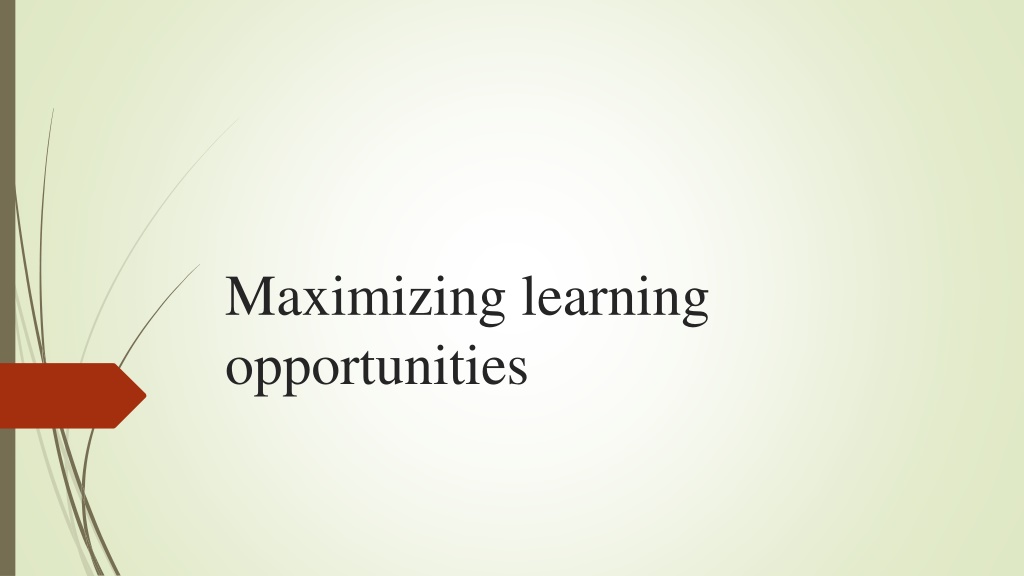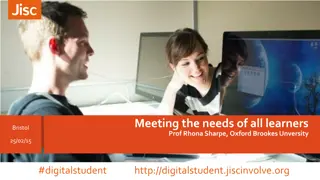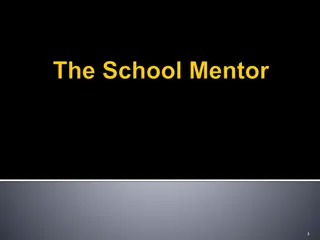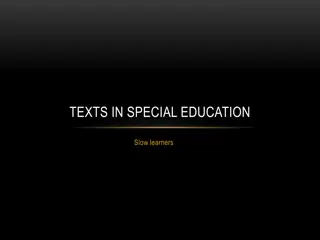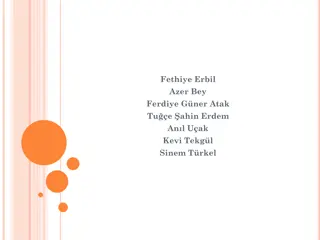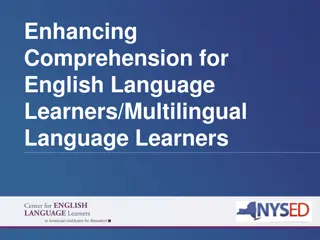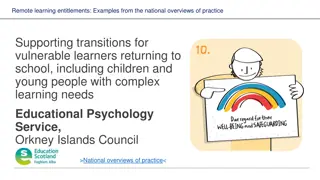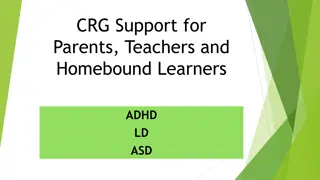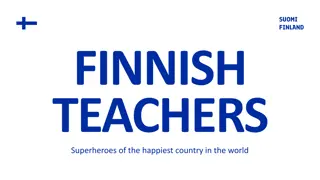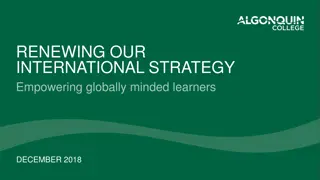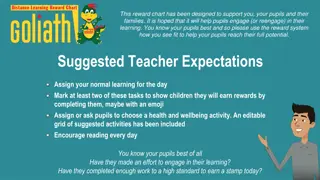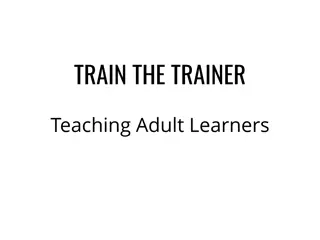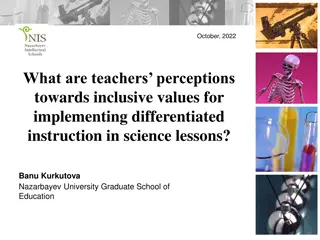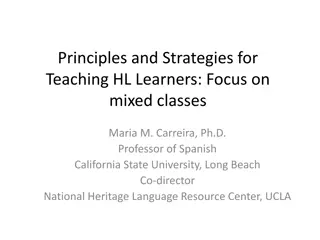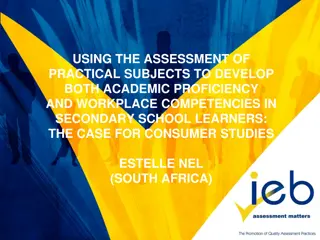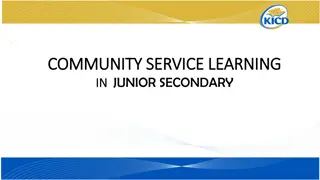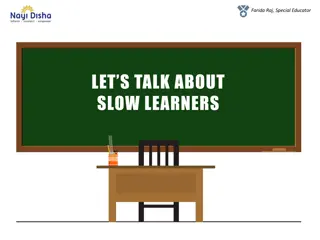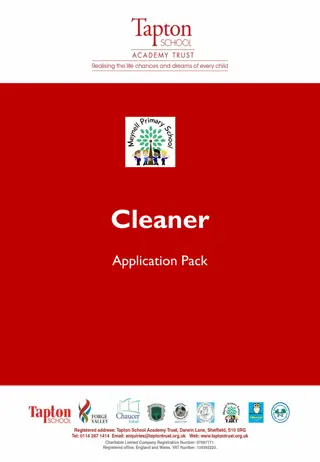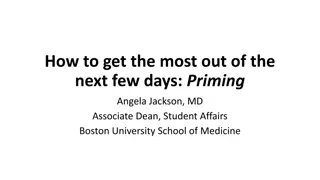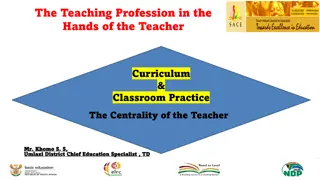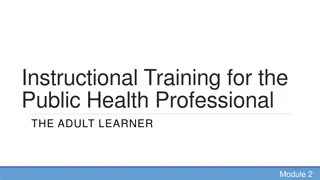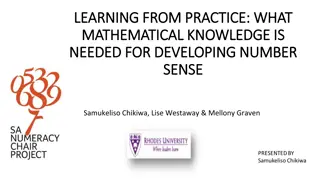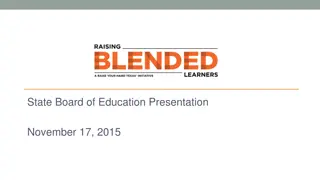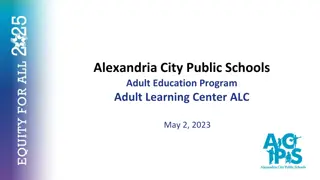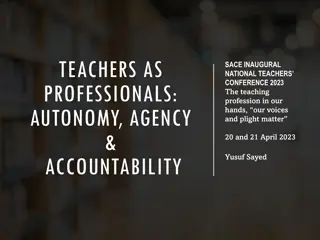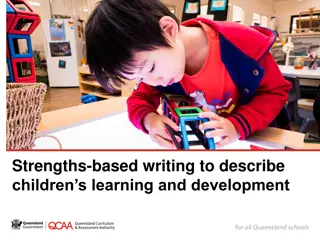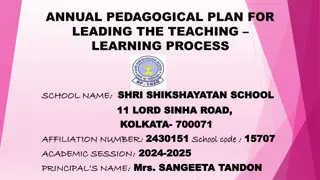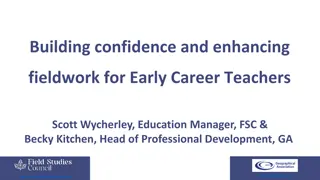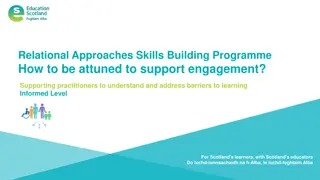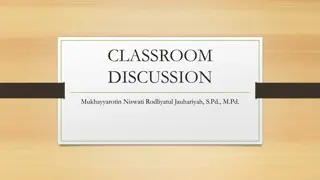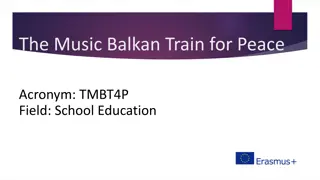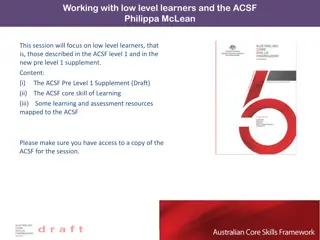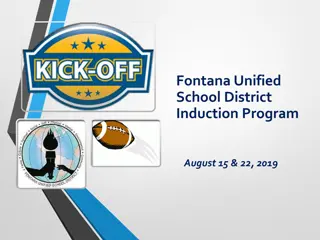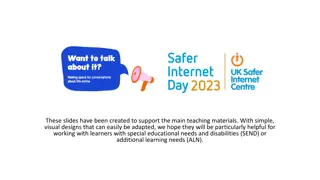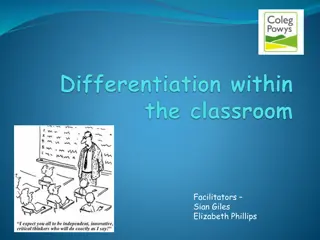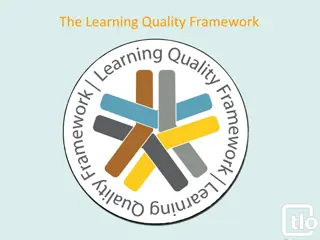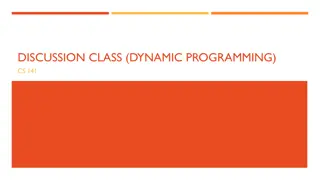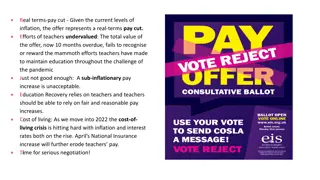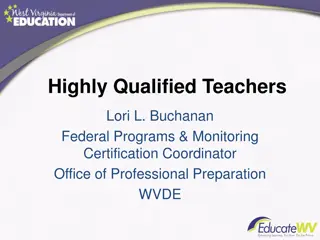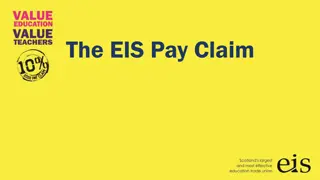Maximizing Learning Opportunities: Empowering Teachers and Learners
Exploring the dynamic interplay between teachers and learners in the realm of education, this content delves into the creation and utilization of learning opportunities. It challenges traditional notions of teaching to highlight the importance of empowering learners to take control of their own learning experiences. The limitations of predetermined factors like teaching agendas, materials, and syllabus specifications are examined, emphasizing the need for adaptability and interactive processes in education.
- Learning opportunities
- Empowering teachers
- Dynamic education
- Student-centered learning
- Teaching limitations
Download Presentation

Please find below an Image/Link to download the presentation.
The content on the website is provided AS IS for your information and personal use only. It may not be sold, licensed, or shared on other websites without obtaining consent from the author. Download presentation by click this link. If you encounter any issues during the download, it is possible that the publisher has removed the file from their server.
E N D
Presentation Transcript
Maximizing learning opportunities
It means to answer questions such as . What constitutes learning opportunities? How do we know learning opportunities have or have not been created? Do learners utilize learning opportunities created by teachers? Is it the responsibility of the teacher alone to create learning opportunities? Can learners also create learning opportunities?
Teaching, however purposeful, cannot automatically lead to learning for the simple reason that learning is primarily a personal construct controlled by the individual learner. To succeed . If learning is indeed controlled by the learner, then teachers can only try to create the conditions necessary for learning to take place.
Traditional Players If it is a joint activity of both T and Ss We may have to get away from the long-cherished notion that pedagogic success is determined by a combination of a well-planned teachers agenda supported by a well-designed textbook based on a well-conceived syllabus.
Limitations of Teachers Agenda A prepared teaching agenda in the form of lesson plans teachers know that they cannot become prisoners of their own agenda. Constant monitoring + suitable change making agenda focus almost exclusively on what is taught whereas, in reality, it is different from what is available to learn. This availability is mainly based on the interactive nature of classroom events classroom interaction learners join their teachers in generating language input This will change teacher s agenda
Limitations of Teaching Materials product of careful and creative planning on the part of textbook writers not the result of any interactive process of classroom events. they can hardly address the specific interactive needs and wants So: textbooks should function as source-books rather than course-books (Prabhu, 1987)
Limitations of Syllabus Specifications practicing teacher is expected to chart a course of action in the classroom to achieve the goals of syllabus specifications. without effective methodological mediation, a syllabus remains a lifeless list of linguistic labels Can be treated only as a pre-syllabus that has to be negotiated through classroom interactive process Learners construct a built-in syllabus Teaching syllabus???learning syllabus??? The interactive process changes a teaching syllabus to a learning syllabus
Learning Opportunities Inside the Classroom learner involvement teacher questioning
learner involvement meaningful learner involvement the learners will be able to find their own path to learning teachers will be able to create the optimal environment necessary for learning What is learner investment? when language learners speak, they are not only exchanging information with target language speakers, but they are constantly organizing and reorganizing a sense of who they are and how they relate to the social world. So, they are building identity
So. How? listen when language learners speak, and build on what they say Recognizing their voices means recognizing their attempt to create learning opportunities for themselves and for other participants in class This will . contribute to the classroom discourse Help them navigate in a direction not anticipated by the teacher.
teacher questioning ask the right type of questions that will trigger meaningful interaction Question types: choice questions : agree/disagree ..yes/no product questions: provide a factual response process questions: learners opinions or interpretations metaprocess questions: the learners have to formulate the grounds for their reasoning To facilitate negotiation use process and metaprocess
L2 development studies show that: display questions (permit pre-determined answers) 79% referential questions: propositionally longer and grammatically more complex elicit new pieces of information prompt Ss to actively engage their reasoning skills
Turn a single, unitary contribution to classroom talk by a teacher or a student or a group of students raising their voice in chorus, irrespective of the length of the linguistic unit (a conversational filler, a word, a clause, a sentence, etc.) and irrespective of the discoursal functions (question, statement, evaluation, etc.).
Points when a student asked for the meaning of the word, the teacher did not immediately give a definition. Instead, she asked other students to volunteer. Even after a fairly satisfactory answer was given by a student, the teacher turned to other students to make sure that everybody had understood the concept only after a lengthy dialogue the teacher gave her own explanation utilize learning opportunities created by the learner, even if the learner talk, from the teacher s point of view, is not highly relevant to the task at hand Particular learner s problem of comprehension should be brought to the attention of the whole class and dealt with suitably
Learning Opportunities Outside the Classroom participatory research: sustained and systematic activities in which learners and teachers together explore all the available avenues to generate learning opportunities in and outside the classroom. So There is a need to connect the classroom with: Local community Global community
Connecting with the local community (1) Form communities of learners. (2) Interact with competent speakers of the target language. (3) Develop a habit of keeping diaries or journals. (4) Exchange information with teachers and peers. (5) Adapt and create new teaching materials.
Connecting with the global community This will provide an exciting world of authentic resources helping them read cultural artifacts and political events Form virtual community of learners
Now Sit with a partner and outline the micro strategies Explore more on connecting with the global and local community Explore the different projects What the teacher taught What the learners learned Which one did you find more practical?
